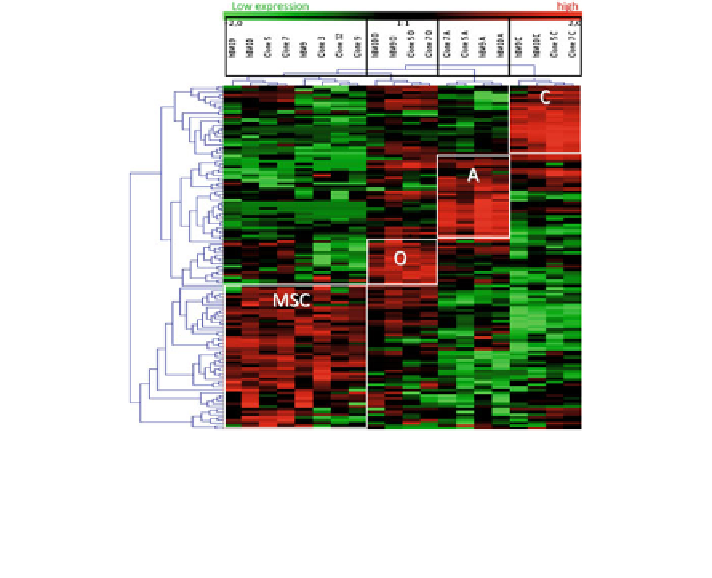Biomedical Engineering Reference
In-Depth Information
Fig. 2 Clonal heterogeneity of bone marrow MSCs. Hierarchical clustering using individual
samples and genes down regulated after adipogenic (A), osteogenic (O), and chondrogenic (C)
differentiation and genes implicated in A, O, and C differentiation. Individual samples are three
primary MSC layers and five MSC clones before differentiation and two primary MSC layers and
two MSC clones after A, O, and C differentiation. The individual samples show considerable
differences in expression before and after differentiation. From: Delorme et al. [
23
]
states is expected within a few days [
46
]. However, such experiments have not
been carried out so far. While such observations do not rule out the impact of
microenvironments on the formation of heterogeneous populations, they suggest
that stem cells populations can develop heterogeneity also independent of the
presence of complex in vivo environments. However, a direct proof of the
assumption of (stem cell) state fluctuations would require demonstrating them in
individual cells in a defined environment. A prerequisite of such studies is long
term single cell tracking, which has been successfully demonstrated for HSCs [
72
],
and for which excellent new technology has been established [
43
].
In summary, there is evidence that MSCs are very flexible in their fate decisions
and can adapt to a large variety of different environments. The experimental
findings can be understood assuming that individual cells underlie permanent
fluctuations of their regulatory states and that these fluctuations are modulated by
the cell environment.
3.3 Heterogeneity as Consequence of MSC Ageing (Intrinsic)
The functional potential of MSCs has been shown to decrease throughout life.
Under homeostatic conditions, there are limited demands on the self-renewing
stem cells and so these cells divide infrequently, sparing stem cells the perils of

Search WWH ::

Custom Search